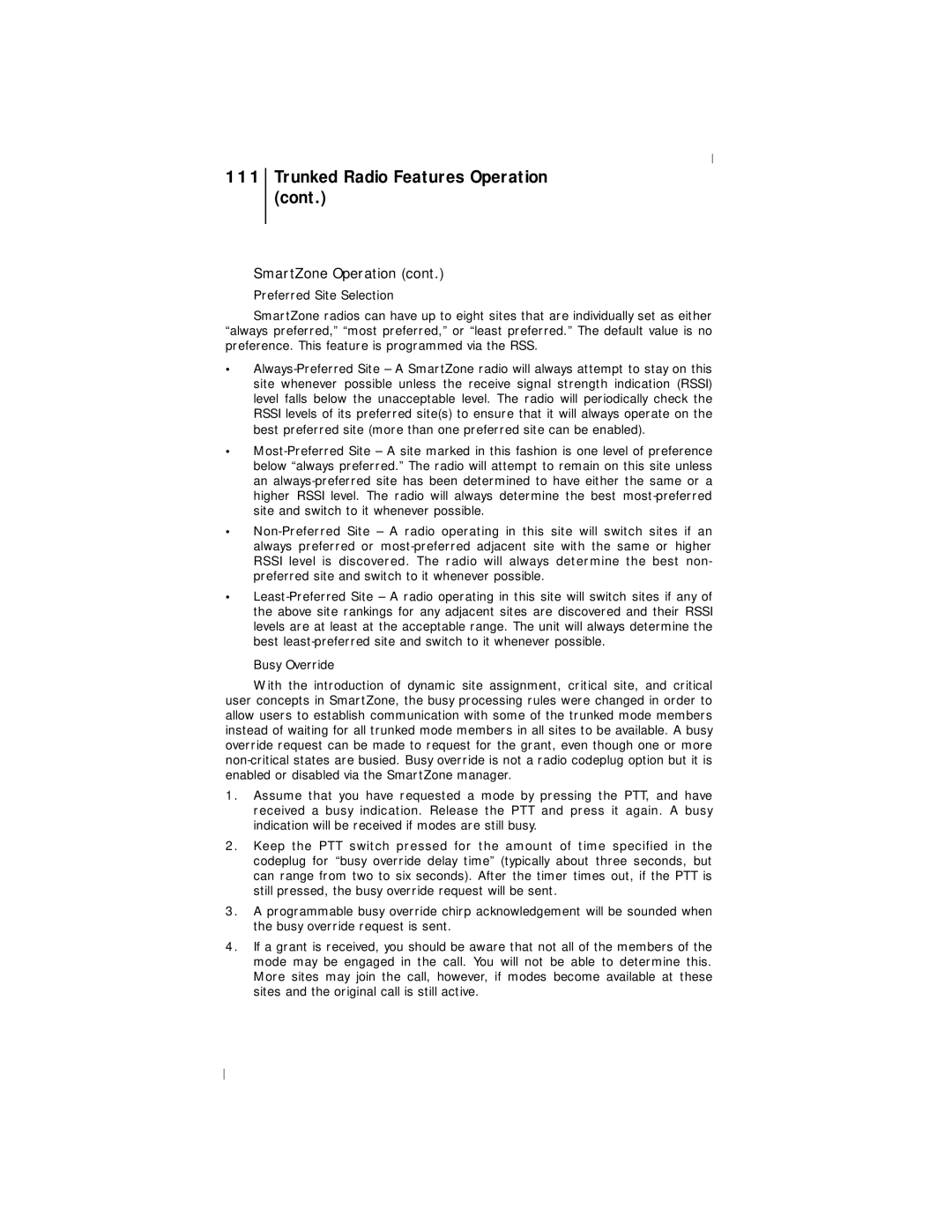111Trunked Radio Features Operation (cont.)
SmartZone Operation (cont.)
Preferred Site Selection
SmartZone radios can have up to eight sites that are individually set as either “always preferred,” “most preferred,” or “least preferred.” The default value is no preference. This feature is programmed via the RSS.
•
•
•
•
Busy Override
With the introduction of dynamic site assignment, critical site, and critical user concepts in SmartZone, the busy processing rules were changed in order to allow users to establish communication with some of the trunked mode members instead of waiting for all trunked mode members in all sites to be available. A busy override request can be made to request for the grant, even though one or more
1.Assume that you have requested a mode by pressing the PTT, and have received a busy indication. Release the PTT and press it again. A busy indication will be received if modes are still busy.
2.Keep the PTT switch pressed for the amount of time specified in the codeplug for “busy override delay time” (typically about three seconds, but can range from two to six seconds). After the timer times out, if the PTT is still pressed, the busy override request will be sent.
3.A programmable busy override chirp acknowledgement will be sounded when the busy override request is sent.
4.If a grant is received, you should be aware that not all of the members of the mode may be engaged in the call. You will not be able to determine this. More sites may join the call, however, if modes become available at these sites and the original call is still active.
